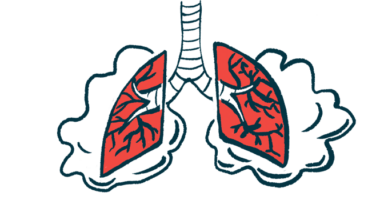Case Report Highlights Rare Form of MG Affecting Newborns

Infants born to women with myasthenia gravis (MG) may develop a rare condition called transient neonatal myasthenia gravis (TNMG), which needs to be properly recognized in order to be appropriately managed, a new report highlights.
“A neonate [newborn] born to a mother with MG is at risk for TNMG. After birth, these patients should be closely monitored by a pediatrician for TNMG signs and symptoms, as symptoms may only begin 3–72 hours after birth,” its researchers wrote.
The study, “Transient Neonatal Myasthenia Gravis: A Case Report,” was published in the journal Cureus.
MG is caused by self-reactive antibodies that interfere with the communication between nerve and muscle cells, resulting in muscle weakness. TNMG occurs when MG-causing antibodies from a pregnant woman cross over to the baby, resulting in MG symptoms. TNMG usually resolves on its own in time, but it needs to be managed appropriately to prevent serious complications.
Here, scientists described the case of a 31-year-old woman who had been diagnosed with MG nine years before.
She had given birth to a daughter shortly before her MG diagnosis and had experienced three miscarriages in the intervening years. She had undergone thymectomy three years before and was being treated with pyridostigmine, a medicine commonly used to treat MG sold under the brand name Mestinon, among others.
After a closely followed but uneventful pregnancy, the woman gave birth via planned cesarean section. The newborn was male and weighed 2,990 grams, or just over 6.5 pounds.
Although the delivery was uneventful, the newborn soon displayed problems, including difficulty feeding, a weak cry, and a constantly open mouth. The newborn was admitted to the neonatal intensive care unit (NICU) 38 hours after birth.
Gavage feeding — when food is administered through a tube placed through the mouth or nose into the stomach — was started due to continued problems feeding.
Laboratory tests revealed abnormally high levels of MG-causing antibodies targeting the acetylcholine receptor, confirming a diagnosis of TNMG.
The baby started treatment with neostigmine, a medication similar to pyridostigmine, on the fourth day of life. This led to only a slight improvement in the child’s overall condition, so two rounds of treatment with intravenous immunoglobulin were administered on days eight and nine.
The baby’s condition started to improve at day 12, and bottle feeding with oral pyridostigmine was started. Two days later, however, the baby exhibited abnormal tear and lung secretions, which were presumed to be a response to anticholinergic medications (pyridostigmine and neostigmine). The child’s condition improved with a reduction in these treatments, including a suspension of neostigmine.
No further treatment was necessary, and by day 22 the baby had normal muscle tone and was feeding normally. Pyridostigmine was weaned to a stop when the baby was 31 days old, and the baby was discharged from the hospital soon after.
A follow-up visit a month after leaving the hospital showed that the child had no MG symptoms and appeared normal on neurological examination.







